09 Sep2019
By Joanne Van Boxtel and Heather Taylor Wizikowski

This article and photo originally were originally published in SmartBrief Education and are reprinted with permission.
We all know the numbers are sobering. A 2018 brief from the Council for Exceptional Children showed critical shortages of special education teachers in 48 states and the District of Columbia. Fifty-one percent of all school districts and 90% of high-poverty school districts report difficulty recruiting highly qualified special education teachers. The exit rate for special education teachers is nearly twice that of general education teachers and enrollment in teacher training programs has declined by 35% over the previous five years.
It seems a dismal picture, but there is light at the end of the tunnel — one that prepares teachers to enter this dynamic field and equips them with tools to help them skillfully and confidently persist in the profession.
30 Aug2019
By Lynn M. Gangone
 While serving on this year’s (Phi Delta Kappan) PDK Poll Advisory Board, I listened and collaborated with scores of thought leaders in the education ecosystem—The National Education Association, The Learning Policy Institute, The Learning First Alliance, The Gay, Lesbian and Straight Education Network, among others. We determined what approaches to take to quantify, understand, and disseminate the vast amount of information and data garnered from this extremely worthwhile and useful poll. We discussed the results and how they could be utilized to advance 21st century classrooms, its students, and those who lead them.
While serving on this year’s (Phi Delta Kappan) PDK Poll Advisory Board, I listened and collaborated with scores of thought leaders in the education ecosystem—The National Education Association, The Learning Policy Institute, The Learning First Alliance, The Gay, Lesbian and Straight Education Network, among others. We determined what approaches to take to quantify, understand, and disseminate the vast amount of information and data garnered from this extremely worthwhile and useful poll. We discussed the results and how they could be utilized to advance 21st century classrooms, its students, and those who lead them.
What is the importance of the PDK Poll?
This year’s PDK Poll was entitled, “Frustration in The Schools: Teachers Speak Out on Pay, Funding, and Feeling Valued.” The new release is one of several polls PDK has conducted to examine opinions on public education for more than 50 years. The poll, according to PDK, is “a steady reflection of U.S. opinion about public education.” Its results are meaningful because they offer an annual review of one of the most important parts of our society—public schools, and focuses on of some our nation’s most crucial people—teachers. The poll measures opinions on the value of a public-school education and its teachers while giving us a sense of how our schools are supported, or more importantly, how they are not supported. It gives us a hypothetical picture of what the future of the educational world might hold and enlightens us about current issues from the perspective of the public. It informs and helps us contemplate how students are changing and what we, as educators, need to do to support and foster
14 Aug2019
By Arlene Borthwick, Jon Clausen, Teresa Foulger and David Slykhuis
This article and photo originally appeared on the Advancing Research & Innovation in the STEM Education of Preservice Teachers in High-Need School Districts (ARISE) website and are reprinted with permission.
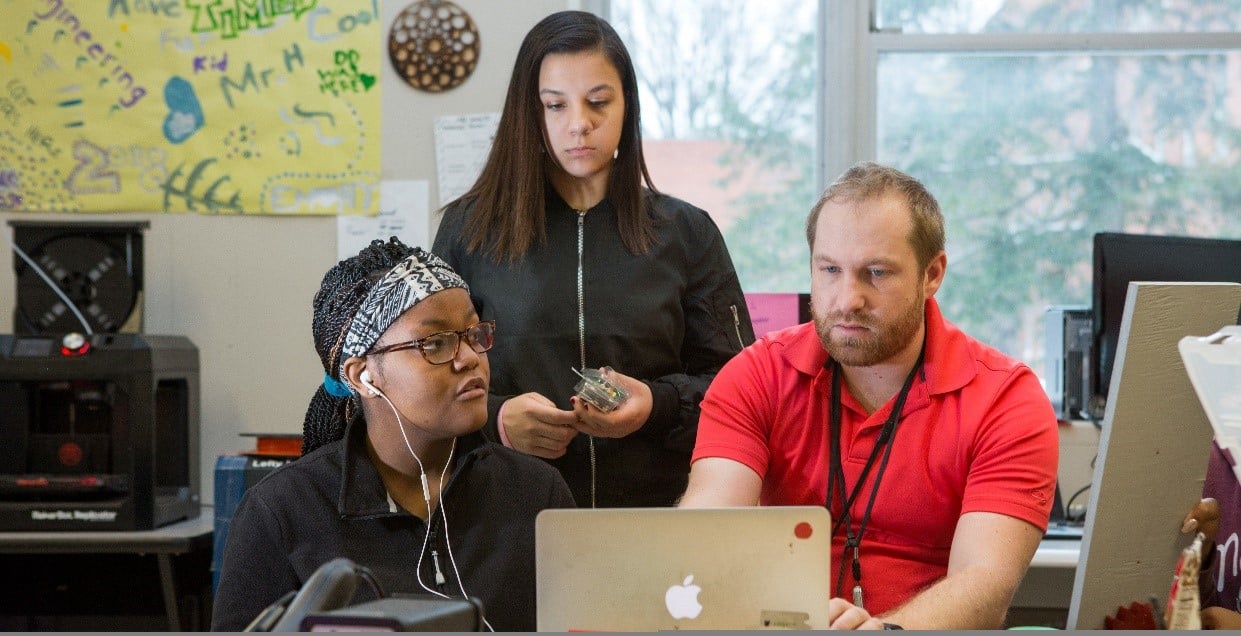
Despite heavy investment in STEM (e.g., STEM for ALL), most PK-20 science, technology, engineering, and mathematics instruction remains heavily siloed. To date, educators have not agreed on a clear definition of STEM. Is it curriculum or a teaching technique/pedagogy? Can a science lesson be called STEM, even if the other domains are not fully represented? As technology advocates, we think STEM curricula should have a strong representation from all four domains.
The STEM movement was intended to address science, technology, engineering, and mathematics in order to produce students who are prepared for the unique needs of today’s workforce. With regard to the “T” component of STEM, the only way to develop teacher candidates who fully embrace the power of technology for P12 is to infuse technology throughout their preparation.
A “technology infusion” approach
14 Aug2019
By Jacqueline Rodriguez
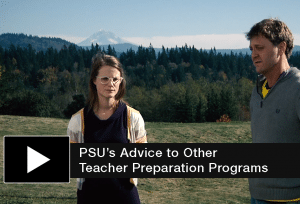 As the student population has diversified so has our understanding of the general education classroom, specifically who we serve in an inclusive setting. Our students with special education services are learning the majority of their grade level curriculum in general education classrooms. This paradigm shift requires effective collaboration between service providers and teachers as well as a deep understanding and application of differentiation to meet the needs of all students.
As the student population has diversified so has our understanding of the general education classroom, specifically who we serve in an inclusive setting. Our students with special education services are learning the majority of their grade level curriculum in general education classrooms. This paradigm shift requires effective collaboration between service providers and teachers as well as a deep understanding and application of differentiation to meet the needs of all students.
For years, the two fields of general education and special education have been siloed. Persistence and partnership is how
09 Aug2019
By Jacqueline Rodriguez
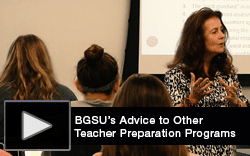 The key to developing the Bowling Green State University (BGSU) dual licensure program is reaching out to the local area to ensure the program is built with the local needs at the forefront. “The local data is how the university can drive change,” recalls a district leader. Faculty also believe collaboration with the district is central to their mission and their success with candidates. Making connections with the field office and the supervising teachers ensured faculty could relate what candidates were seeing in the field to what they were learning in their coursework.
The key to developing the Bowling Green State University (BGSU) dual licensure program is reaching out to the local area to ensure the program is built with the local needs at the forefront. “The local data is how the university can drive change,” recalls a district leader. Faculty also believe collaboration with the district is central to their mission and their success with candidates. Making connections with the field office and the supervising teachers ensured faculty could relate what candidates were seeing in the field to what they were learning in their coursework.
University systems must also be taken into consideration, especially when working across colleges and across departments. Two questions drove the BGSU program leadership as they developed their dual licensure program: What is best for our students in this program? An what is best for this program? One significant concern was finding strong clinical placements for each teacher candidate. The success of a program with hundreds of teacher candidates rested with strong clinical partnerships.
Finally, serving all students that walk into the classroom was the priority when developing the dual licensure program at BGSU. “This wasn’t an experiment, this is the way BGSU does business,” reflected a faculty member. It was a choice to move away from single licensure that, over time, changes the makeup of the district teaching population, which is why district leaders were involved at every step in the program development.
To learn more, watch the Advice to Others video highlighting BGSU’s Models of Inclusive Clinical Teacher Preparation, part of AACTE’s Research-to-Practice Spotlight Series.
05 Aug2019
By Katrina Norfleet
 Half of public school teachers have seriously considered leaving the profession in the past few years. Only about half say their community values them a great deal or a good amount, and a majority says that, given the opportunity, they’d vote to go on strike for higher pay, according to the 51st edition of the annual PDK Poll of the Public’s Attitudes Toward the Public Schools released on August 5.
Half of public school teachers have seriously considered leaving the profession in the past few years. Only about half say their community values them a great deal or a good amount, and a majority says that, given the opportunity, they’d vote to go on strike for higher pay, according to the 51st edition of the annual PDK Poll of the Public’s Attitudes Toward the Public Schools released on August 5.
The full results of the PDK Poll are compiled in a report titled Frustration in the schools: Teachers speak out on pay, funding, and feeling valued. This year’s poll has several new features: For the first time in 20 years, PDK included a survey of public school teachers alongside the survey of the general population. They also expanded its sample size by breaking out Asian adults in addition to Black, White, and Hispanic adults. This year, online focus groups of public school parents and public school teachers were included to better understand why Americans responded as they did to the poll questions.
Other notable poll results include the following:
02 Aug2019
By Katrina Norfleet

AACTE joins the Learning First Alliance (LFA) and other national education groups in planning for Public Schools Week 2020, February 24 – 28. Next year will mark the third annual LFA Public Schools Week, designated for administrators, teachers, specialists, teacher educators, parents and school board members to host events for their communities and reach out to lawmakers, businesses, and other community members to discuss the importance of public education.
As a partnering organization, AACTE recognizes that teachers, principals, and support staff who serve in public schools are key to helping students succeed and our nation thrive, and invites members to
01 Aug2019
By Jacqueline Rodriguez
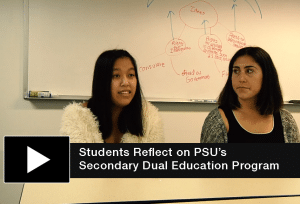 A number of students in Portland State University’s (PSU) Secondary Dual Education Program (SPED) recently reflected on advice they were given before entering the graduate program. “I always want more education than less,” one teacher candidate was advised by a mentor in the field of medicine. The candidate now looks back on her experience in the program with appreciation. “I was ready. I had the resources. I had been in the classroom for two years; it felt natural. I didn’t have the same level of trepidation as some of my first year friends.”
A number of students in Portland State University’s (PSU) Secondary Dual Education Program (SPED) recently reflected on advice they were given before entering the graduate program. “I always want more education than less,” one teacher candidate was advised by a mentor in the field of medicine. The candidate now looks back on her experience in the program with appreciation. “I was ready. I had the resources. I had been in the classroom for two years; it felt natural. I didn’t have the same level of trepidation as some of my first year friends.”
The students who complete the PSU program graduate with a dual endorsement in a secondary education content area and special education. Another candidate reflected on the importance of serving every student in the classroom. His decision to pursue a two-year graduate program in secondary English and special education was an obvious one; it ensured he would be prepared to meet the needs of all students with a range of abilities.
The benefit of being profession-ready is not only valued by the teacher candidates. High school students also note the tremendous advantage they have when a teacher who understands the unique needs of students with IEPs is leading the classroom. In particular, college access traditionally has been stymied for students with significant disabilities. However, one high school student reflected that she has a mentor in her teacher, someone who has guided her toward college-ready curriculum. Learning from their students is another area of mutual benefit expressed by the candidates. The necessity to meet the needs of each student in the classroom is universally acknowledged by candidates, students, and administrators.
To learn more, view the What’s in it for me? video highlighting PSU’s Secondary Dual Education program, part of AACTE’s Research-to-Practice Spotlight Series.
29 Jul2019
By Jerrica Thurman
 Developing and sustaining partnerships with local school districts are critical to the success of the Bowling Green State University (BGSU) Inclusive Early Childhood (IEC) program. Superintendents who work with BGSU assert that all parties need to understand the challenges each school district and university face and must be willing to bridge the gap between research and clinical practice together. BGSU’s teacher candidates are deployed for clinical practice in special education at local schools including in rural areas.
Developing and sustaining partnerships with local school districts are critical to the success of the Bowling Green State University (BGSU) Inclusive Early Childhood (IEC) program. Superintendents who work with BGSU assert that all parties need to understand the challenges each school district and university face and must be willing to bridge the gap between research and clinical practice together. BGSU’s teacher candidates are deployed for clinical practice in special education at local schools including in rural areas.
“One of the pieces that works really well for us is that all of the people working in the education department at the university are parents themselves of students in our district so there’s a vested interest,” said Francis Scruci, superintendent of Bowling Green City Schools. “I think there’s a mutual respect. We certainly respect what the university does and I think they respect what we’re trying to do at the K-12 level and we understand the challenges that both of us face. We are willing to bridge that gap and try to help each other become successful.”
BGSU’s overall objective is to prepare graduates of the IEC program to teach young children with and without disabilities in inclusive settings. The IEC program blends the best practices from early childhood education with early childhood special education. It addresses the knowledge, skills, and values necessary to meet the needs of each child. Graduates of the program are prepared to provide differentiated, evidence-based instruction to young children from birth through grade 3.
To learn more, watch the Developing and Sustaining Partnerships video highlighting BGSU’s Models of Inclusive Clinical Teacher Preparation, part of AACTE’s Research-to-Practice Spotlight Series.
26 Jul2019
By Katrina Norfleet
The Teacher Educator national peer-reviewed journal recently shared the top 10 most downloaded articles in the first three months of 2019. The most downloaded article in 2018 was “Current Issues in Teacher Education: An Interview with Dr. Linda Darling-Hammond” with 2,726 downloads. Other popular articles cover a range of topics including multicultural teacher education, perceptions of ELL students, student stress and coping, and teaching reflective practice. The full list of the top 10 articles are included in the table below.
AACTE President and CEO Lynn M. Gangone serves on Editorial Advisory Board of The Teacher Educator, a forum for promoting discussion among educators who seek to challenge existing boundaries in the field. The journal invites AACTE members to submit notable work on current
19 Jul2019
By Katrina Norfleet
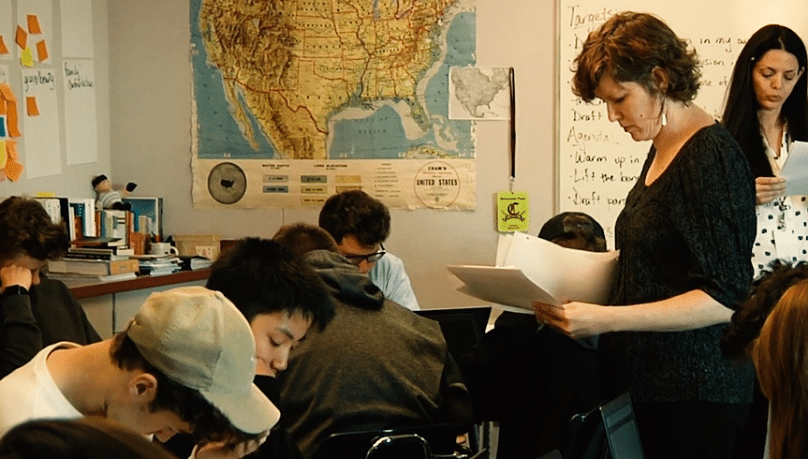
One of the key components of Portland State University’s (PSU) Secondary Dual Education Program is its success in developing and sustaining partnerships with local school districts.
Marvin Lynn, dean of the Graduate School of Education at PSU, shares how the program prepares secondary education teacher candidates to bring content knowledge and “the knowledge that special education teachers have to bare about the learning process and about how to work with these unique populations” to local schools.
Educators like Ana Capac, a special education teacher at Evergreen High School, specifically ask for student teachers from the PSU program because of the mindsets and approaches they bring to the classroom and community. “It is really important that I’m supporting both the student teachers I’m working with on how they are developing this mindset of inclusion, supporting all students, and working within the school to support their colleagues as well,” says Capac.
Andrew Gilford, assistant principal at Clackamas High School, emphasizes this culture shift to more collegial relationships where the PSU teacher candidates and the classroom teachers “speak the same language” and can work together to serve students with disabilities and improve learning outcomes. “Coming from this kind of program and this kind of background, you are immediately an advocate,” adds Rob Parness, special education teacher and former academic coach at Tigard High School.
In discussing the culture shift, Will Parnell, curriculum and instruction department chair at PSU, emphasizes that the program was built based on relationships with the community. “There were local districts that were saying ‘we want special ed teachers that can support students in general ed classrooms’ but they found out that teacher prep programs were not focused on that,” says Susan Bert, assistant professor of practice, special education at PSU. “So there was a need.”
To learn more, view the Developing and Sustaining Partnerships video featuring PSU’s Secondary Dual Education program.
11 Jul2019
By Jerrica Thurman
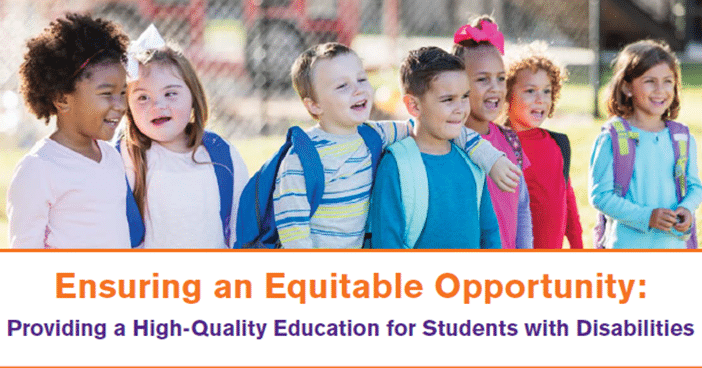
The Council of Chief State School Officers (CCSSO) recently released Ensuring an Equitable Opportunity: Providing a High-Quality Education for Students with Disabilities, a report that details policy and practice considerations around individualized education plans chiefs and state education leaders can reflect upon and implement in ensuring all students, especially students with disabilities, have access to a high-quality education. Students with disabilities are provided with an individualized education program (IEP) to ensure they receive specially-designed instruction and related services. The IEP is the primary mechanism for ensuring students with disabilities receive the right educational content and rigor at the right moment in their education.
The Education for All Handicapped Children Act of 1975 marked an historic win for civil rights when the doors to public education were opened for all students. For the first time, children with disabilities had access to a public education and the hope of a productive and fulfilling future. Today, the Individuals with Disabilities Education Act of 2004 (IDEA), the most recent iteration of that law, aims to deliver on that promise; namely, that all students with disabilities have equitable access to a free appropriate public education (FAPE) in the least restrictive environment.
09 Jul2019
By Brandon R.T. Frost
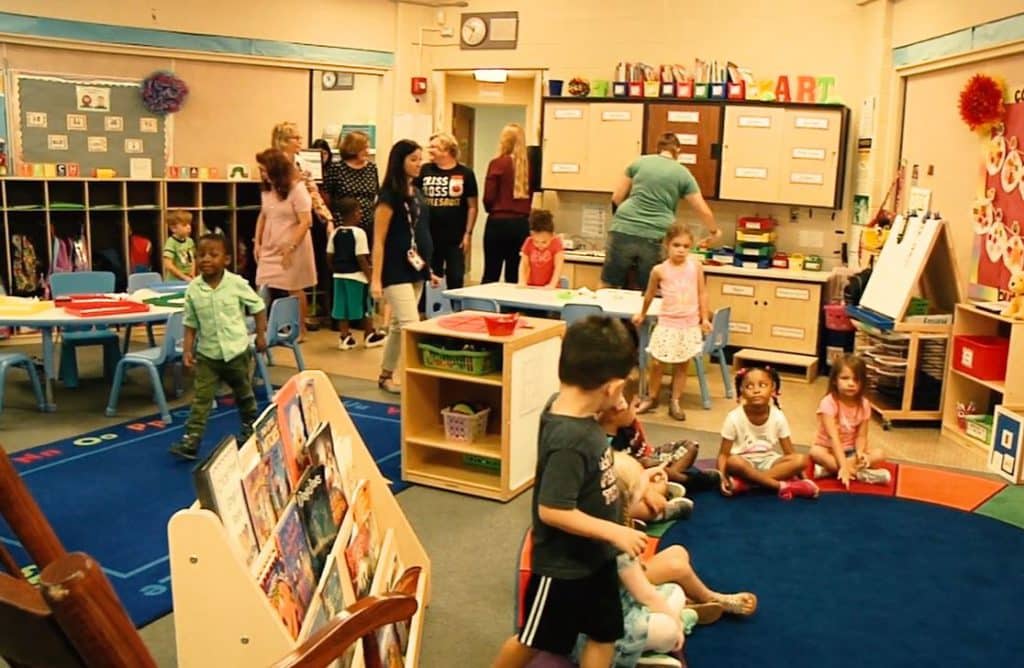
The Dual Licensure component of the Inclusive Early Childhood Program at Bowling Green State University (BGSU) supports teachers by improving their teaching craft and ensuring that teachers’ instructions remain relevant to their students.
Brenda Gift, the director of student services at Educational Services Center of Lake Erie West, applauds the program for providing high quality teachers who are eager to work in integrated classrooms. She further asserts that school districts are more likely to hire BGSU teacher candidates because of their dual licensure. Not only does the dual licensure indicate that teacher candidates can support all students, but it makes them marketable and competitive for hiring.
Some of the mentor teachers in partner school districts who support BGSU teacher candidates are BGSU alumni. Despite the responsibilities of being a classroom teacher, they value mentoring BGSU teacher candidates because they know how important it is to have an effective and supportive host teacher. The early childhood students benefit from teacher candidates because it provides a smaller teacher-to-student ratio. Teacher candidates agree that having proper training for inclusive education benefits them and the students they teach, assuring they are ready to instruct all learners once they enter the classroom.
To learn more, watch the What’s In It for Me? video highlighting BGSU’s Models of Inclusive Clinical Teacher Preparation, part of AACTE’s Research-to-Practice Spotlight Series.
28 Jun2019
By Brandon R.T. Frost
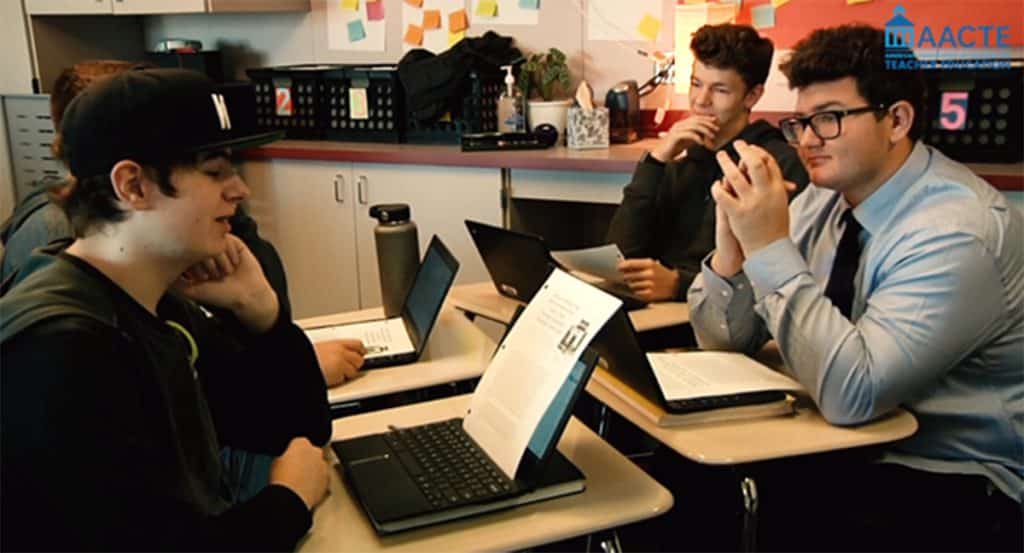
Empowering teachers to feel adequately prepared on their first day of teaching is the goal of Portland State University’s (PSU) Secondary Dual Education Program (SPED). As classrooms becomes more diverse, teachers need skills to address all students’ needs and make every student feel they are included in a positive community.
Andrew Gilford, assistant principal at Clackamas High School, believes the training and preparation his teachers receive from SPED enables them to meet the needs of all their students in the classroom. The program requires all teacher candidates to have two years of practice before entering the classroom. In particular, during the two years candidates engage in a combination of observation and student teaching. Michael Bowersox agrees that the two-year program allowed him to combine his coursework at PSU with classroom practice so that he is ready to be an effective teacher on the very first day as a teacher of record. Teacher candidates are matched with master teachers, learn to plan together, and develop the teaching skills to positively affect student achievement for all.
The highlight of PSU’s Dual Degree program is the training it provides its teacher candidates to be inclusive educators. “A characteristic of a successful classroom is the ability for everyone to feel included and have the opportunity to be included,” says Joseph Cornett, a graduate of PSU and a social studies teacher at David Douglas High School. He explains that the program taught him how to set up his students for success, work collaboratively with teachers, and navigate the school system and curriculum.
To learn more, view the video highlighting PSU’s Secondary Dual Education program, part of AACTE’s Research-to-Practice Spotlight Series.
21 Jun2019
By Brandon R.T. Frost
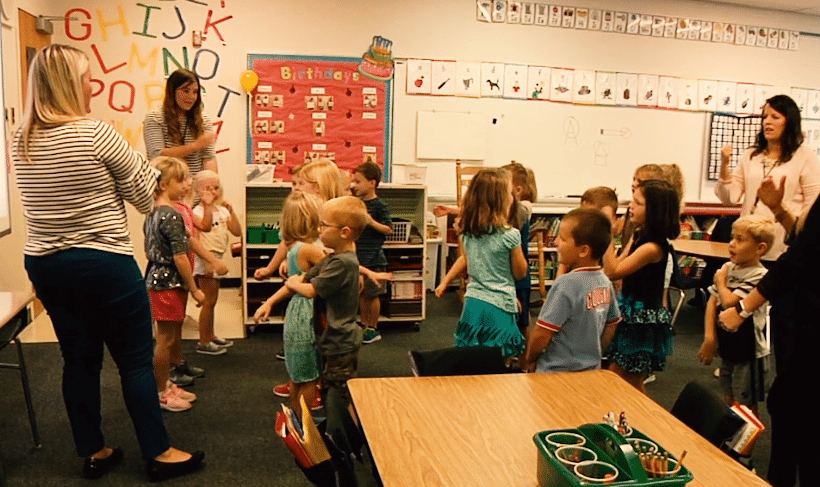
The Early Childhood Inclusive Education Program at Bowling Green State University (BGSU) prepares teachers to educate the youngest of school-age children with a solid foundation for learning. “This program is an example of innovation as it relates to making sure our students at the earliest stage have opportunities to develop and be successful in their lives,” says Rodney Rogers, president of Bowling Green State University. As a public university, BGSU sees itself as serving the public good and views the College of Education & Human Development as a place where all teacher candidates are prepared to meet the needs of their students. Teachers who graduate from the program are ready to enter the classrooms with the skills to accommodate all students.








 While serving on this year’s (Phi Delta Kappan) PDK Poll Advisory Board, I listened and collaborated with scores of thought leaders in the education ecosystem—The National Education Association, The Learning Policy Institute, The Learning First Alliance, The Gay, Lesbian and Straight Education Network, among others. We determined what approaches to take to quantify, understand, and disseminate the vast amount of information and data garnered from this extremely worthwhile and useful poll. We discussed the results and how they could be utilized to advance 21st century classrooms, its students, and those who lead them.
While serving on this year’s (Phi Delta Kappan) PDK Poll Advisory Board, I listened and collaborated with scores of thought leaders in the education ecosystem—The National Education Association, The Learning Policy Institute, The Learning First Alliance, The Gay, Lesbian and Straight Education Network, among others. We determined what approaches to take to quantify, understand, and disseminate the vast amount of information and data garnered from this extremely worthwhile and useful poll. We discussed the results and how they could be utilized to advance 21st century classrooms, its students, and those who lead them.
 As the student population has diversified so has our understanding of the general education classroom, specifically who we serve in an inclusive setting. Our students with special education services are learning the majority of their grade level curriculum in general education classrooms. This paradigm shift requires effective collaboration between service providers and teachers as well as a deep understanding and application of differentiation to meet the needs of all students.
As the student population has diversified so has our understanding of the general education classroom, specifically who we serve in an inclusive setting. Our students with special education services are learning the majority of their grade level curriculum in general education classrooms. This paradigm shift requires effective collaboration between service providers and teachers as well as a deep understanding and application of differentiation to meet the needs of all students. The key to developing the Bowling Green State University (BGSU) dual licensure program is reaching out to the local area to ensure the program is built with the local needs at the forefront. “The local data is how the university can drive change,” recalls a district leader. Faculty also believe collaboration with the district is central to their mission and their success with candidates. Making connections with the field office and the supervising teachers ensured faculty could relate what candidates were seeing in the field to what they were learning in their coursework.
The key to developing the Bowling Green State University (BGSU) dual licensure program is reaching out to the local area to ensure the program is built with the local needs at the forefront. “The local data is how the university can drive change,” recalls a district leader. Faculty also believe collaboration with the district is central to their mission and their success with candidates. Making connections with the field office and the supervising teachers ensured faculty could relate what candidates were seeing in the field to what they were learning in their coursework. Half of public school teachers have seriously considered leaving the profession in the past few years. Only about half say their community values them a great deal or a good amount, and a majority says that, given the opportunity, they’d vote to go on strike for higher pay, according to the 51st edition of the annual PDK Poll of the Public’s Attitudes Toward the Public Schools released on August 5.
Half of public school teachers have seriously considered leaving the profession in the past few years. Only about half say their community values them a great deal or a good amount, and a majority says that, given the opportunity, they’d vote to go on strike for higher pay, according to the 51st edition of the annual PDK Poll of the Public’s Attitudes Toward the Public Schools released on August 5.






